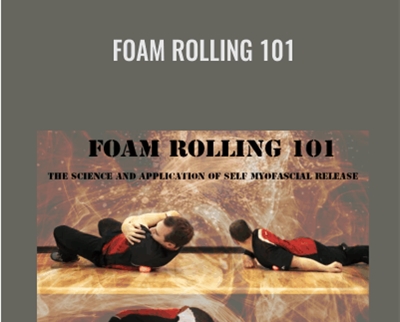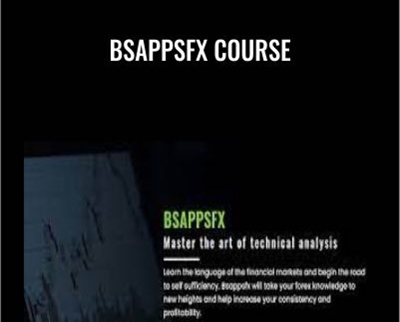Foam Rolling 101 – Dean Somerset
Original price was: $67.00.$12.00Current price is: $12.00.
Foam Rolling 101 – Dean Somerset Download. Fascia has become a massive buzz-word in the fitness industry, with people developing routines, devices, and tre…
🎓 Learn and Grow with Foam Rolling 101 – Dean Somerset - Original price was: $67.00.$12.00Current price is: $12.00.
Unlock your potential with the Foam Rolling 101 – Dean Somerset - Original price was: $67.00.$12.00Current price is: $12.00. course. Designed for learners of all levels, this comprehensive online program offers you the tools and strategies to achieve success in both your personal and professional life. At WSOLib, we provide top-quality learning resources, making it easy for you to enhance your skills from the comfort of your own home.
Whether you're looking to advance your career, improve your knowledge, or explore a new hobby, the Foam Rolling 101 – Dean Somerset - Original price was: $67.00.$12.00Current price is: $12.00. course is your gateway to valuable insights and practical applications. Start your learning journey today and experience the benefits of lifelong education!
Salepage link: At HERE. Archive:
I’m going to show you exactly how and why to foam roll for maximum effect
Fascia has become a massive buzz-word in the fitness industry, with people developing routines, devices, and treatments to work this specific tissue with the hopes that it will provide a benefit to their training plans, whether that means increasing muscle size, strength, suppleness, or speed. This has occurred relatively rapidly in terms of how quickly things are adopted in fitness, with foam rollers only becoming popular within the last 20 years, and only becoming ubiquitous in fitness facilities in the last 5. Very little research has been done on fascia, especially compared to other tissues and structures of the body, and as a result, there’s a lot of misinformation about the tissue and how to get the best results from working it. Most of the fitness communities information comes from physical therapists, chiropractors, and manual therapists, whereas very little comes from dedicated fitness professionals. The history of fascia in medicine and fitness is incredibly diminutive. During Rennaissance medicine, fascia was considered functionally useless, essentially a scaffolding supportive tissue to hold up organs, blood vessels and nerves. It was routinely cut out and discarded to showcase the more important tissues, like organs, muscles, and bones. Most anatomical illustrations of the time, specifically from Vesalius, showed bodies completely void of fascial
tissue. Much of the reasoning for this is that fascia would degrade quickly with cadaver studies, and would be very difficult to study compared to other larger structures. With the advent of microscopes, and later scanning electron microscopes, which could offer a more 3D view of the tissues, fascia became somewhat more interesting.
Get immediately download Dean Somerset – Foam Rolling 101
Researchers found it had its’ own blood supply, nerve supply, contractile properties, and could communicate and provide proprioceptive information about the rest of the body. Not only does it encircle all the muscles and muscle fibers of the body in their own contractile encasements, it also influences how much they contract, form continuations with tendons and ligaments and created networks of contractions throughout the body, which opened the door to integrated movement analysis. It also affected the internal organs, wound healing, and how layers of muscles glided over each other.
That’s awesome and all, but how does that help you??
If there was a way for you to see immediate improvements in range of motion, strength, speed, and pain-free movement capability, it would be worth investing in. This is the typical range of responses people get from dedicated foam rolling work, massage or specific therapeutic modalities targeting fascial adhesions between layers of tissue. Looking solely at foam rolling, the application of compressive forces on the tissues can cause an immediate adjustment to the tone of the muscle and fascia being altered. This can help people squat without pain, run without altered alignment that could lead to injury, and slow the degenerative process. Foam rollers are everywhere. I can even walk into a popular yoga clothing company store and pick one up there, right next to the stretchy pants and over-sloganed water bottles. This is great, but it’s merely a tool to use. The best use of that tool is rarely discussed, nor is it showed in much detail regarding the anatomical considerations.
For instance, let’s take the IT band, the thick band of dense fibrous fascial tissue on the outside of the thigh that attaches the hip to below the knee.
People will consistently roll this area out, but will approach it in a less than optimal way, where they lay right on the side of the thigh, essentially right over the seam of their pants or shorts. They typically roll back and forth way too quickly, as if they were trying to roll out dough for a pie. When they hit a tender spot they hold their breath and bear down on that sucker like they’re trying to hit a deadlift PR. For better results on the IT band, roll with a slight tilt towards the quad muscle (forward of the side seam with the toe pointing slightly towards the floor), roll incredibly slow, and always make sure you can breathe deeply and slowly. These three small tweaks can make a massive difference in rolling immediately.
Not only is this small variation in how you roll important, but the coordinated plan of attack on what else to roll is equally as important. Combining rolling the IT band with rolling of the adductors (inner thigh), and also the psoas tends to produce the best relief of knee and thigh pain associated with IT band friction compared to just rolling the IT band by itself, and much better relief than simply stretching your quads. This is just one of the things I talk about in Foam Rolling 101. The application of best practices and coordinated planning of how to roll to attack specific areas with the greatest impact are two of the big rocks I wanted to cover when I put this together, and are worth the investment of your time to view the videos in themselves.
📚 Why Choose the Foam Rolling 101 – Dean Somerset - Original price was: $67.00.$12.00Current price is: $12.00. Course?
The Foam Rolling 101 – Dean Somerset - Original price was: $67.00.$12.00Current price is: $12.00. course is more than just an online program—it's a transformative learning experience designed to help you reach new heights. Here's why learners from around the world trust WSOLib:
- ✅ Comprehensive and easy-to-follow course content.
- ✅ Practical techniques that you can apply immediately.
- ✅ Lifetime access to all course materials.
- ✅ Learn at your own pace, from anywhere in the world.
- ✅ No hidden fees—one-time payment with full access.
💻 What’s Included in the Foam Rolling 101 – Dean Somerset - Original price was: $67.00.$12.00Current price is: $12.00. Course?
This course comes with:
- 🎥 High-quality video lessons that guide you step-by-step.
- 📄 Downloadable resources and course materials.
- 🧩 Interactive exercises to enhance your learning experience.
- 📧 Access to customer support for any assistance you need.
🚀 Ready to Get Started?
Don’t miss out on the opportunity to unlock your potential with the Foam Rolling 101 – Dean Somerset - Original price was: $67.00.$12.00Current price is: $12.00. course. Start learning today and take the first step toward a brighter future. At WSOLib, we are committed to providing you with the best online learning experience.
If you have any questions, feel free to contact us. We’re here to support your learning journey every step of the way!
Specification: Foam Rolling 101 – Dean Somerset
|
User Reviews
Only logged in customers who have purchased this product may leave a review.

Original price was: $67.00.$12.00Current price is: $12.00.












There are no reviews yet.